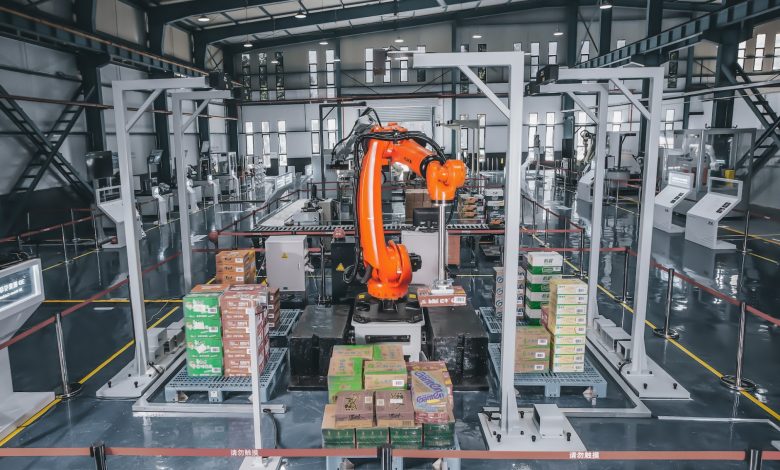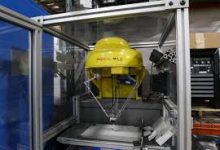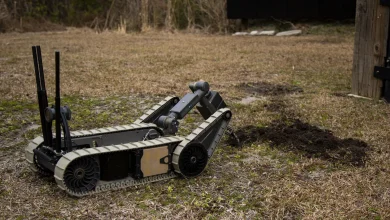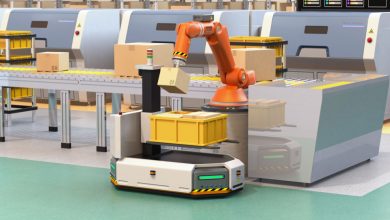Empowering Humanity
The Role of Hybrid Robotics in Assistive Technologies and Human Augmentation

Introduction:
In the realm of assistive technologies and human augmentation, hybrid robotics stands as a beacon of hope, offering innovative solutions to enhance the lives of individuals with disabilities and augment the capabilities of able-bodied individuals. By blending biological and mechanical components, hybrid robotics enables a new generation of assistive devices and wearable technologies that empower users to overcome physical limitations, enhance their independence, and unlock new possibilities for exploration and expression. In this comprehensive exploration, we delve into the transformative role of hybrid robotics in assistive technologies and human augmentation, highlighting its applications, benefits, and future prospects in shaping a more inclusive and accessible world.
Restoring Mobility and Independence:
One of the primary applications of hybrid robotics in assistive technologies is in restoring mobility and independence for individuals with mobility impairments or disabilities. By integrating biological sensors and actuators with mechanical platforms, hybrid robots enable the development of prosthetic limbs, exoskeletons, and mobility aids that mimic natural movement and provide assistance with walking, standing, and performing activities of daily living. For example, biohybrid prosthetic limbs equipped with advanced sensors and myoelectric control systems can restore naturalistic movement and sensation, allowing users to regain mobility and engage in activities with greater ease and confidence.
Restoring Mobility and Independence:
The Transformative Role of Assistive Technologies in Empowering Individuals
Mobility is a fundamental aspect of human life, enabling individuals to engage with their surroundings, pursue their goals, and participate fully in society. However, for millions of people worldwide living with mobility impairments or disabilities, accessing and navigating the world can be a significant challenge. In recent years, advances in assistive technologies, particularly in the realm of hybrid robotics, have provided new hope for restoring mobility and independence to individuals with diverse needs and abilities. In this extensive exploration, we delve into the transformative role of assistive technologies, focusing on their applications, benefits, and future prospects in empowering individuals to reclaim their mobility and independence.
Enhancing Mobility through Assistive Devices:
Assistive technologies play a pivotal role in enhancing mobility for individuals with mobility impairments or disabilities, enabling them to overcome barriers and navigate the world with greater ease and confidence. From prosthetic limbs and orthoses to wheelchairs and mobility scooters, assistive devices come in a variety of forms, tailored to meet the unique needs and preferences of users. These devices leverage advanced materials, engineering principles, and technologies such as hybrid robotics to mimic natural movement and provide support and assistance with walking, standing, and performing activities of daily living. For example, biohybrid prosthetic limbs equipped with sensors and actuators can restore naturalistic movement and sensation, allowing users to walk, run, and engage in activities with greater freedom and independence.
Personalized Solutions for Diverse Needs:
One of the key benefits of assistive technologies is their ability to provide personalized solutions for individuals with diverse needs and abilities. Whether someone has lost a limb due to amputation, experienced paralysis from a spinal cord injury, or faces mobility challenges due to age-related conditions, assistive devices can be tailored to meet their specific requirements and goals. Advances in 3D printing, scanning technologies, and customization techniques enable prosthetists and rehabilitation specialists to create bespoke solutions that fit the user’s anatomy, preferences, and functional requirements. Additionally, assistive devices can be equipped with smart technologies such as sensors, actuators, and artificial intelligence algorithms to adapt to changing conditions, monitor performance, and provide real-time feedback to users and clinicians.
Promoting Independence and Quality of Life:
Assistive technologies play a crucial role in promoting independence and enhancing the quality of life for individuals with mobility impairments or disabilities. By providing support and assistance with mobility-related tasks, assistive devices enable users to perform activities of daily living, engage in social interactions, and pursue their passions and interests with greater autonomy and confidence. For example, a person with a prosthetic limb can walk, climb stairs, and participate in recreational activities such as hiking or cycling, while a wheelchair user can navigate public spaces, access transportation, and attend events or gatherings with ease. Additionally, assistive devices can facilitate employment opportunities, education, and community integration, enabling individuals to lead fulfilling and meaningful lives.
Empowering Through Technology and Innovation:
Advances in technology, particularly in the realm of hybrid robotics, are revolutionizing the field of assistive technologies, offering new solutions to address the complex needs and challenges faced by individuals with mobility impairments or disabilities. By integrating biological and mechanical components, hybrid robots enable the development of next-generation assistive devices that blur the lines between human and machine, offering unprecedented levels of functionality, versatility, and adaptability. For example, biohybrid exoskeletons equipped with muscle-like actuators and motion sensors can assist individuals with walking, standing, or lifting, reducing physical strain and fatigue while enhancing mobility and independence. Similarly, robotic prosthetic limbs with neural interfaces and advanced control algorithms can restore naturalistic movement and sensation, enabling users to perform intricate tasks with precision and ease.
Shaping the Future of Mobility and Inclusion:
As we look towards the future, assistive technologies hold immense promise for shaping the future of mobility and inclusion, paving the way for a more accessible, equitable, and inclusive society. By leveraging the power of technology and innovation, we can continue to push the boundaries of what is possible, developing assistive devices that enhance mobility, promote independence, and empower individuals to live life to the fullest. Moreover, as assistive technologies become more advanced and widespread, we have an opportunity to break down barriers, challenge stereotypes, and create a world where everyone, regardless of their abilities, can participate fully and contribute meaningfully to society.
In conclusion,
Assistive technologies play a transformative role in restoring mobility and independence for individuals with mobility impairments or disabilities, enabling them to overcome barriers, achieve their goals, and lead fulfilling lives. By providing personalized solutions, promoting independence, and harnessing the power of technology and innovation, assistive devices empower individuals to reclaim their mobility and independence, shaping a more accessible, inclusive, and equitable future for all.
Restoring Mobility and Independence: The Transformative Role of Assistive Technologies in Empowering Individuals
Mobility is a fundamental aspect of human life, enabling individuals to engage with their surroundings, pursue their goals, and participate fully in society. However, for millions of people worldwide living with mobility impairments or disabilities, accessing and navigating the world can be a significant challenge. In recent years, advances in assistive technologies, particularly in the realm of hybrid robotics, have provided new hope for restoring mobility and independence to individuals with diverse needs and abilities. In this extensive exploration, we delve into the transformative role of assistive technologies, focusing on their applications, benefits, and future prospects in empowering individuals to reclaim their mobility and independence.
Enhancing Mobility through Assistive Devices:
Assistive technologies play a pivotal role in enhancing mobility for individuals with mobility impairments or disabilities, enabling them to overcome barriers and navigate the world with greater ease and confidence. From prosthetic limbs and orthoses to wheelchairs and mobility scooters, assistive devices come in a variety of forms, tailored to meet the unique needs and preferences of users. These devices leverage advanced materials, engineering principles, and technologies such as hybrid robotics to mimic natural movement and provide support and assistance with walking, standing, and performing activities of daily living. For example, biohybrid prosthetic limbs equipped with sensors and actuators can restore naturalistic movement and sensation, allowing users to walk, run, and engage in activities with greater freedom and independence.
Enhancing Sensory Perception: Harnessing Technology to Expand Human Experience
Sensory perception is the foundation of human experience, shaping how we interact with the world around us and interpret our surroundings. For individuals with sensory impairments or limitations, such as vision or hearing loss, these experiences may be altered or diminished, posing unique challenges to their daily lives. However, with advancements in technology, particularly in the realm of assistive devices and hybrid robotics, there is new hope for enhancing sensory perception and enabling individuals to overcome these barriers. In this extensive exploration, we delve into the transformative role of technology in enhancing sensory perception, examining its applications, benefits, and future prospects in expanding human experience and promoting inclusion.
Vision Augmentation:
Visual impairment affects millions of people worldwide, impacting their ability to perceive and navigate their surroundings. Assistive technologies and hybrid robotics offer innovative solutions to enhance vision and improve the quality of life for individuals with visual impairments. For example, wearable devices equipped with cameras and image processing algorithms can provide real-time object recognition, text-to-speech conversion, and navigation assistance, enabling users to identify objects, read text, and navigate indoor and outdoor environments with greater ease and independence. Additionally, biohybrid vision systems inspired by the principles of biological vision can mimic the functionality of the human eye, providing users with enhanced visual acuity, depth perception, and color vision, further enhancing their sensory experience.
Auditory Augmentation:
Hearing loss is another common sensory impairment that affects millions of people worldwide, limiting their ability to communicate, interact, and engage with others. Assistive technologies and hybrid robotics offer innovative solutions to enhance auditory perception and improve communication for individuals with hearing impairments. For example, cochlear implants and bone conduction devices can bypass damaged or non-functional parts of the auditory system, directly stimulating the auditory nerve and restoring hearing function. Additionally, wearable devices equipped with microphones and signal processing algorithms can enhance speech intelligibility, filter out background noise, and provide auditory feedback, enabling users to communicate more effectively in noisy or challenging environments.
Tactile Augmentation:
Tactile perception plays a crucial role in our ability to interact with the world around us, providing information about textures, shapes, and spatial relationships. For individuals with tactile impairments or limitations, such as those with sensory processing disorders or neuropathies, assistive technologies and hybrid robotics offer innovative solutions to enhance tactile perception and promote sensory integration. For example, wearable devices equipped with vibrotactile actuators and haptic feedback systems can simulate tactile sensations, providing users with information about their surroundings and facilitating sensory exploration and learning. Additionally, biohybrid tactile sensors inspired by the principles of biological touch can mimic the sensitivity and responsiveness of human skin, enabling users to perceive subtle changes in pressure, texture, and temperature, further enhancing their sensory experience.
Multisensory Integration:
The integration of multiple sensory modalities plays a crucial role in our ability to perceive and interpret the world around us, providing a rich and nuanced understanding of our environment. Assistive technologies and hybrid robotics offer innovative solutions to enhance multisensory integration and promote holistic sensory experiences for individuals with sensory impairments or limitations. For example, wearable devices equipped with multisensory feedback systems can combine visual, auditory, and tactile cues to provide users with a comprehensive understanding of their surroundings and facilitate sensory exploration and navigation. Additionally, biohybrid multisensory interfaces inspired by the principles of biological perception can integrate multiple sensory inputs in real-time, enabling users to perceive and interact with virtual or augmented environments in immersive and intuitive ways, further enhancing their sensory experience.
Future Directions and Opportunities:
As technology continues to advance, there are exciting opportunities for further enhancing sensory perception and expanding human experience. Emerging technologies such as brain-computer interfaces, neuroprosthetics, and neural implants offer new possibilities for direct communication with the brain, bypassing sensory impairments and enabling individuals to perceive and interact with the world in entirely new ways. Additionally, advancements in artificial intelligence, machine learning, and neural networks hold promise for developing more sophisticated assistive devices and hybrid robotics that can adapt to users’ needs and preferences, providing personalized solutions for enhancing sensory perception and promoting inclusion.
In conclusion,
technology plays a transformative role in enhancing sensory perception, enabling individuals with sensory impairments or limitations to overcome barriers and engage more fully with the world around them. By harnessing the power of assistive devices and hybrid robotics, we can expand human experience, promote inclusion, and empower individuals to live life to the fullest. As researchers and engineers continue to push the boundaries of what is possible, there are exciting opportunities for further enhancing sensory perception and promoting sensory integration, shaping a more accessible, inclusive, and equitable future for all.
Personalized Solutions for Diverse Needs:
One of the key benefits of assistive technologies is their ability to provide personalized solutions for individuals with diverse needs and abilities. Whether someone has lost a limb due to amputation, experienced paralysis from a spinal cord injury, or faces mobility challenges due to age-related conditions, assistive devices can be tailored to meet their specific requirements and goals. Advances in 3D printing, scanning technologies, and customization techniques enable prosthetists and rehabilitation specialists to create bespoke solutions that fit the user’s anatomy, preferences, and functional requirements. Additionally, assistive devices can be equipped with smart technologies such as sensors, actuators, and artificial intelligence algorithms to adapt to changing conditions, monitor performance, and provide real-time feedback to users and clinicians.
Promoting Independence and Quality of Life:
Assistive technologies play a crucial role in promoting independence and enhancing the quality of life for individuals with mobility impairments or disabilities. By providing support and assistance with mobility-related tasks, assistive devices enable users to perform activities of daily living, engage in social interactions, and pursue their passions and interests with greater autonomy and confidence. For example, a person with a prosthetic limb can walk, climb stairs, and participate in recreational activities such as hiking or cycling, while a wheelchair user can navigate public spaces, access transportation, and attend events or gatherings with ease. Additionally, assistive devices can facilitate employment opportunities, education, and community integration, enabling individuals to lead fulfilling and meaningful lives.
Empowering Through Technology and Innovation:
Advances in technology, particularly in the realm of hybrid robotics, are revolutionizing the field of assistive technologies, offering new solutions to address the complex needs and challenges faced by individuals with mobility impairments or disabilities. By integrating biological and mechanical components, hybrid robots enable the development of next-generation assistive devices that blur the lines between human and machine, offering unprecedented levels of functionality, versatility, and adaptability. For example, biohybrid exoskeletons equipped with muscle-like actuators and motion sensors can assist individuals with walking, standing, or lifting, reducing physical strain and fatigue while enhancing mobility and independence. Similarly, robotic prosthetic limbs with neural interfaces and advanced control algorithms can restore naturalistic movement and sensation, enabling users to perform intricate tasks with precision and ease.
Shaping the Future of Mobility and Inclusion:
As we look towards the future, assistive technologies hold immense promise for shaping the future of mobility and inclusion, paving the way for a more accessible, equitable, and inclusive society. By leveraging the power of technology and innovation, we can continue to push the boundaries of what is possible, developing assistive devices that enhance mobility, promote independence, and empower individuals to live life to the fullest. Moreover, as assistive technologies become more advanced and widespread, we have an opportunity to break down barriers, challenge stereotypes, and create a world where everyone, regardless of their abilities, can participate fully and contribute meaningfully to society.
In conclusion,
Assistive technologies play a transformative role in restoring mobility and independence for individuals with mobility impairments or disabilities, enabling them to overcome barriers, achieve their goals, and lead fulfilling lives. By providing personalized solutions, promoting independence, and harnessing the power of technology and innovation, assistive devices empower individuals to reclaim their mobility and independence, shaping a more accessible, inclusive, and equitable future for all.
Enhancing Sensory Perception:
Hybrid robotics enhances sensory perception and communication for individuals with sensory impairments, enabling them to interact with the world in new and meaningful ways. By integrating biological and mechanical components, hybrid robots can augment sensory modalities such as vision, hearing, and touch, providing users with enhanced sensory feedback and access to information. For example, biohybrid vision systems equipped with cameras and image processing algorithms can assist individuals with visual impairments by providing real-time object recognition, navigation assistance, and scene description, enhancing their spatial awareness and independence in unfamiliar environments.
Assisting with Activities of Daily Living:
Hybrid robotics assists individuals with disabilities or age-related limitations with activities of daily living, enabling them to maintain independence and quality of life. By integrating biological sensors and actuators with mechanical platforms, hybrid robots can assist with tasks such as eating, dressing, grooming, and household chores, reducing reliance on caregivers and promoting autonomy. For example, biohybrid robotic arms equipped with adaptive grippers and haptic feedback systems can assist users with feeding, manipulation, and object manipulation, allowing them to perform tasks with greater ease and efficiency.
Improving Cognitive Function:
Hybrid robotics enhances cognitive function and mental well-being for individuals with cognitive impairments or neurodegenerative diseases, providing cognitive assistance, stimulation, and rehabilitation. By integrating biological and mechanical components, hybrid robots can engage users in interactive activities, cognitive training exercises, and therapeutic interventions that promote cognitive function and memory retention. For example, biohybrid robotic companions equipped with natural language processing algorithms and emotional recognition capabilities can provide companionship, conversation, and cognitive stimulation for individuals with dementia or Alzheimer’s disease, reducing social isolation and enhancing their quality of life.
Augmenting Physical Performance:
Hybrid robotics augments physical performance and enhances human capabilities for able-bodied individuals, enabling them to surpass natural limitations and achieve peak performance in sports, rehabilitation, and occupational settings. By integrating biological sensors and actuators with mechanical platforms, hybrid robots can enhance strength, endurance, and precision in tasks such as sports training, physical therapy, and industrial work. For example, biohybrid exoskeletons equipped with muscle-like actuators and motion tracking sensors can assist athletes in improving their athletic performance, reducing the risk of injury, and optimizing movement biomechanics.
In conclusion,
Hybrid robotics is revolutionizing assistive technologies and human augmentation, offering innovative solutions to enhance mobility, sensory perception, cognitive function, and physical performance for individuals with disabilities and able-bodied individuals alike. By blending biological and mechanical components, hybrid robots enable a new generation of assistive devices and wearable technologies that empower users to overcome physical limitations, enhance their independence, and unlock new possibilities for exploration and expression. As researchers and engineers continue to push the boundaries of what is possible, we can expect to see increasingly sophisticated hybrid robotic systems that transform the lives of individuals and pave the way for a more inclusive and accessible society.




